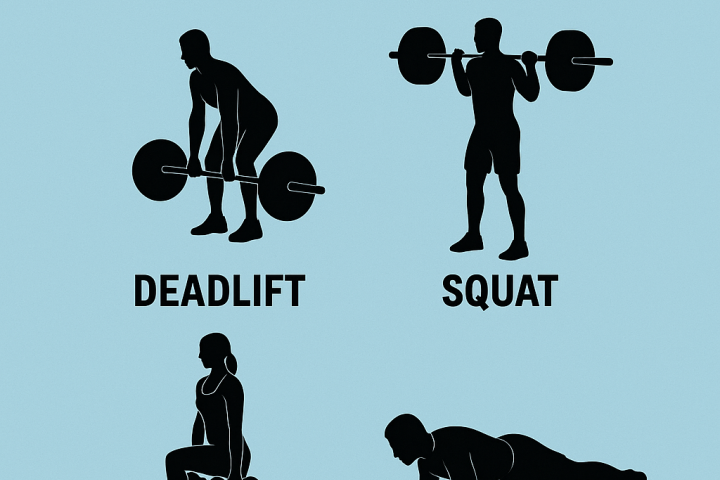Agility Drills Every Cricketer Should Include in Their Routine
Cricket is a game of speed, precision, and agility. Whether you're batting, bowling, or fielding, your ability to move swiftly and change direction can make all the difference. Quick reflexes and sharp movements are essential for avoiding dismissals, making crucial stops, and executing powerful deliveries. Incorporating agility drills into your training routine will not only enhance your performance but also reduce the risk of injuries, keeping you fit and game-ready. In this guide, we'll explore some of the best agility drills every cricketer should practice to gain a competitive edge on the field.
Why Agility Matters in Cricket
Agility is crucial in cricket because it helps players react quickly to game situations. Batsmen need it to take quick singles, bowlers require it for smooth run-ups and follow-throughs, and fielders rely on agility to make spectacular catches and run-outs. Additionally, enhanced agility helps in injury prevention by allowing the body to adapt swiftly to sudden movements. It also boosts endurance, enabling players to maintain peak performance throughout long matches. The right agility drills will improve your balance, coordination, and overall movement efficiency.
Top Agility Drills for Cricketers
1. Ladder Drills for Quick Footwork
Ladder drills are excellent for enhancing foot speed and coordination. These drills not only improve reaction time but also help in maintaining balance and body control during rapid movements. Practicing ladder drills regularly will enhance a cricketer’s ability to move swiftly between the wickets, react quickly in the field, and maintain better foot coordination while batting or bowling. Some key exercises include:
- High Knees: Run through the ladder with high knee lifts to improve leg strength and agility.
- Side Steps: Move sideways through the ladder to develop lateral movement skills.
- In-and-Out Steps: Step in and out of each ladder space quickly to boost reflexes.
- Hopscotch Drill: Jump in and out of the ladder spaces using both feet to improve coordination.
- Crossover Steps: Step diagonally across the ladder to enhance multi-directional movement. Ladder drills are excellent for enhancing foot speed and coordination. Some key exercises include:
👉 Upgrade your cricket gear with our exclusive discounts on Cricket Gear.
2. Cone Drills for Directional Changes
Cone drills help cricketers improve their ability to change direction quickly by enhancing footwork, coordination, and overall movement efficiency. These drills are particularly useful for fielders who need to react instantly to a ball, bowlers adjusting their follow-throughs, and batsmen executing quick singles. By incorporating cone drills into your training, you can develop sharper reflexes and improve overall agility on the field. Popular cone exercises include:
- T-Drill: Set up cones in a 'T' shape and sprint, shuffle, and backpedal around them.
- Zig-Zag Drill: Arrange cones in a zig-zag pattern and sprint around them to enhance movement control.
- Figure Eight Drill: Weave in and out of two closely placed cones to improve balance and reaction time.
- 5-10-5 Drill: Sprint five meters, change direction quickly, sprint ten meters, and then back five meters to improve agility and acceleration.
- Star Drill: Place cones in a star formation and sprint between them in random sequences to simulate game-like movement patterns.
3. Reaction Ball Drills for Reflexes
Using a reaction ball enhances reflexes and hand-eye coordination. These drills are particularly effective for fielders and wicketkeepers who need to react quickly to unpredictable ball movements. Practicing with a reaction ball also sharpens your ability to judge ball trajectory, which is essential in fast-paced match situations. Try:
- Wall Throws: Throw the reaction ball against a wall and react to its unpredictable bounce.
- Partner Drills: Have a partner drop the ball randomly while you attempt to catch it before it bounces twice.
- Rapid Ground Pick-ups: Drop the reaction ball on the ground and attempt to pick it up quickly as it bounces in different directions.
- One-Handed Reflex Catches: Try catching the reaction ball with one hand to improve single-hand coordination and grip strength.
- Multi-Directional Bounce Drill: Bounce the ball against different surfaces to challenge your reaction time from multiple angles.
4. Sprint and Shuttle Runs for Explosive Speed
Speed is essential for quick singles, chasing down balls, and effective bowling run-ups. Explosive acceleration allows batsmen to steal extra runs and fielders to cover ground efficiently. Sprint and shuttle runs help develop acceleration, endurance, and overall agility, ensuring players can maintain peak performance throughout long matches. Key drills include:
- 10-20-30 Sprint: Sprint 10m, rest, then 20m, rest, then 30m to build acceleration and endurance.
- Shuttle Runs: Sprint between two points repeatedly to improve endurance, speed, and change of direction.
- Hill Sprints: Run uphill to strengthen leg muscles and increase explosive speed.
- Curve Sprints: Sprint in an arc or around a curve to enhance agility and balance.
- Reactive Starts: React to a partner's call or visual cue before sprinting to simulate match-like quick responses.
👉 Find the best deals on Cricket bats for beginners and professionals alike.
5. Skipping Rope for Coordination and Stamina
Jump rope exercises improve footwork, stamina, and overall coordination. Skipping is an excellent full-body workout that enhances endurance while strengthening calves, ankles, and core muscles. It also helps cricketers maintain light and quick foot movements, which are crucial for agility on the field. Try variations like:
- Single-leg hops to strengthen each leg individually and improve balance.
- Double-unders for increased speed, endurance, and rhythm control.
- Side-to-side jumps to develop lateral movement essential for quick direction changes.
- Backward skipping to challenge coordination and footwork in different movement patterns.
- High-knee skips to build lower body strength and reinforce quick foot reactions.
6. Box Jumps for Power and Explosiveness
Box jumps are great for developing lower body strength and explosive power, which are essential for quick movements on the field. This exercise improves leg strength, coordination, and balance, enabling cricketers to react faster and with more power in their movements. Regularly practicing box jumps will enhance your sprinting ability, increase jump height for catches, and boost overall agility. Try:
- Single-leg box jumps to enhance balance and unilateral leg strength.
- Lateral box jumps for side-to-side movement improvement and better reaction speed.
- Depth jumps to train rapid muscle contractions, improving explosive power and agility.
- Box jump burpees to combine endurance with power training, increasing stamina and strength simultaneously.
- Weighted box jumps to add resistance, further developing lower body strength and stability.
👉 Follow Our Telegram Channel for the latest discount cricket products and training tips!
Final Thoughts: Elevate Your Cricket Performance
Adding these agility drills to your training routine will sharpen your game, making you a more dynamic and responsive cricketer. Whether you are a budding player or a seasoned pro, consistent agility training will help you stay ahead of the competition.
👉 Visit Cricket Discounts today and save big on your next cricket purchase!
If You Want to Read More Blogs about Cricket You Can!Click Here
If You Want to Read More Blogs about Cricket News and Updates You Can! Click Here
If You Want to Read More Blogs about Cricket Gear Guides You Can! Click Here
If You Want to Read More Blogs about Cricket Tips and Tricks You Can! Click Here
If You Want to Read More Blogs about Product-Focused Blogs You Can! Click Here
If You Want to Read More Blogs about Sales and Offers You Can! Click Here
If You Want to Read More Blogs about Fitness and Training for Cricketers You Can! Click Here
If You Want to Read More Blogs about History and Fun Facts About Cricket You Can! Click Here








Leave a comment